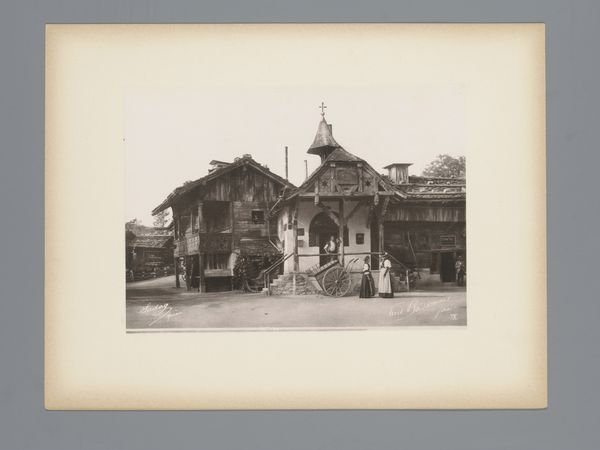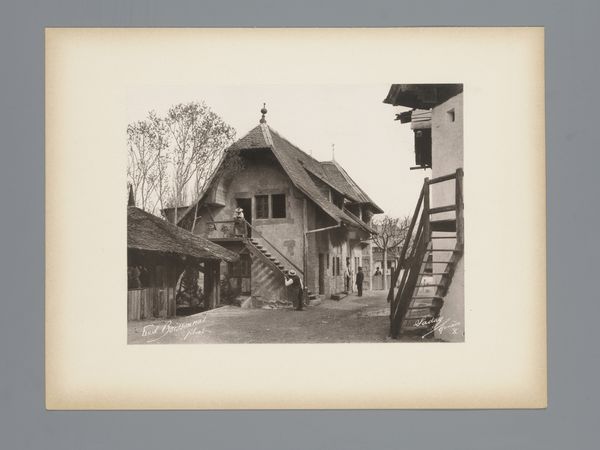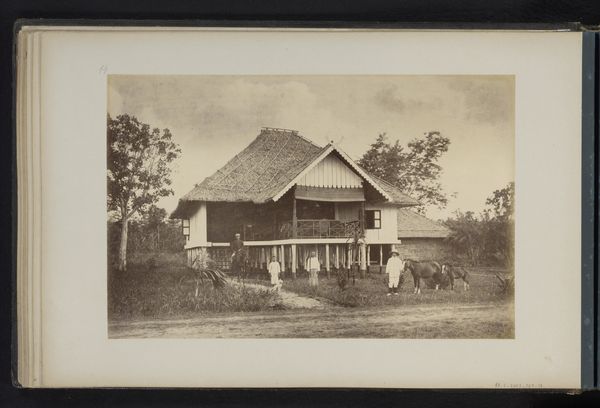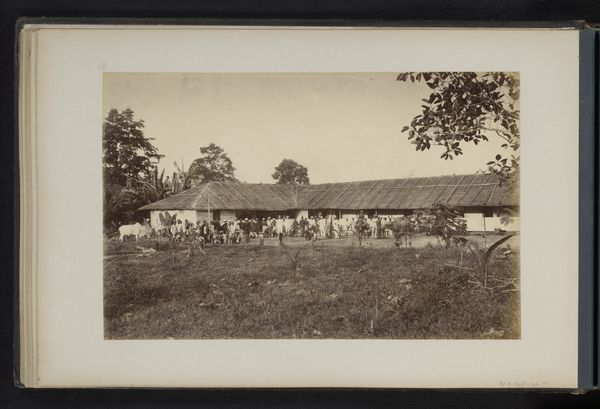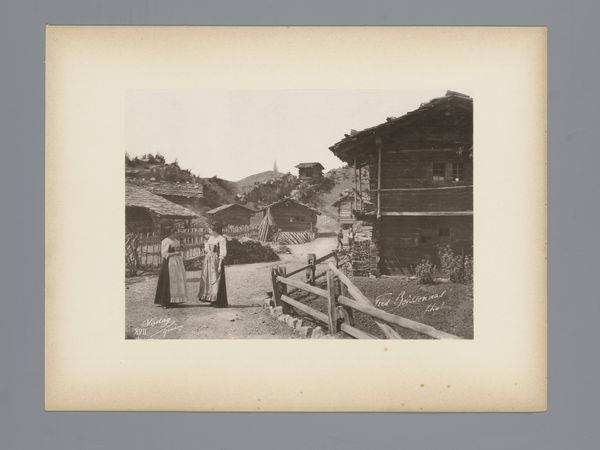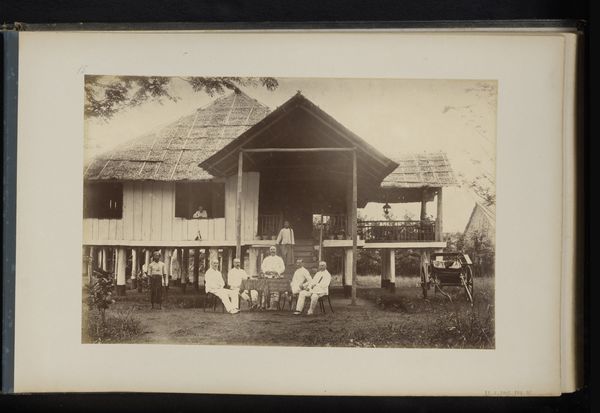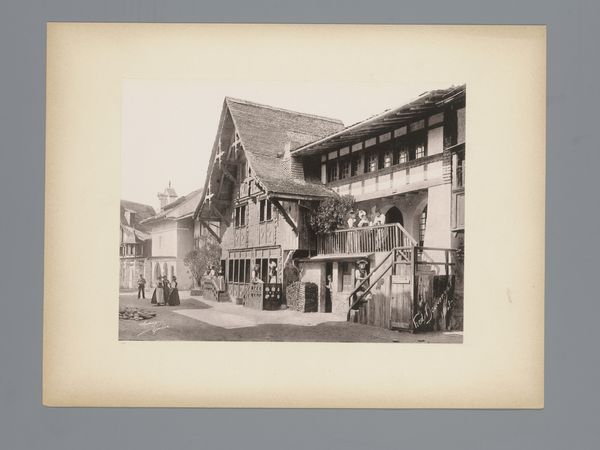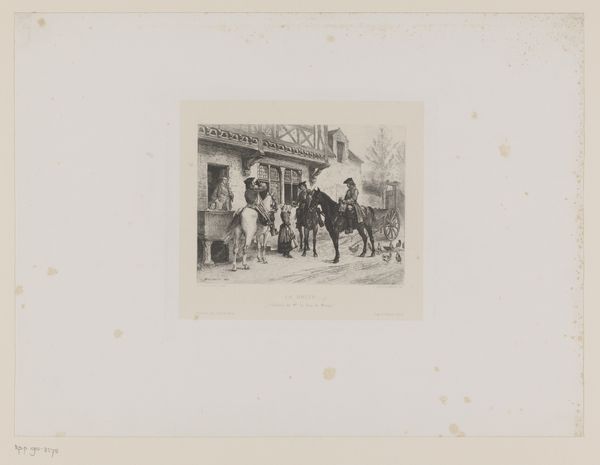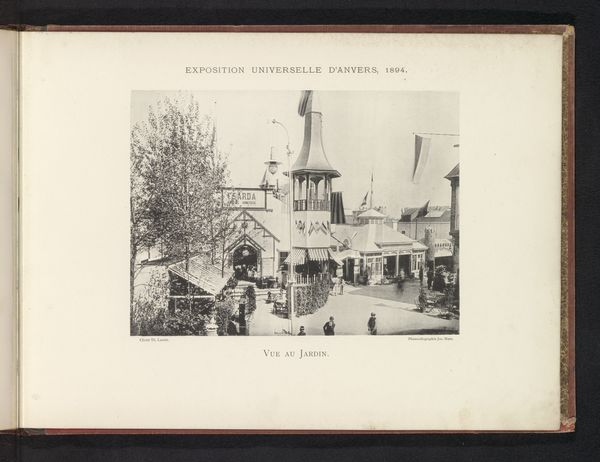
photography, gelatin-silver-print
#
landscape
#
photography
#
gelatin-silver-print
#
genre-painting
#
realism
Dimensions: height 156 mm, width 206 mm
Copyright: Rijks Museum: Open Domain
Curator: This gelatin silver print, titled "Gezicht op een boerderij te Zwitserland" which translates to "View of a farm in Switzerland" is attributed to Frédéric Boissonnas, and was created sometime before 1896. It presents a rather fascinating slice of rural life. Editor: It certainly does. My immediate reaction is how deeply rooted this scene feels in tradition, yet there's something very calculated in its organization. The dark wooden architecture of the building contrasts sharply with the whitewashed coat of the ox in the foreground. What effect does it produce, formally, to contrast such stark visual oppositions? Curator: Well, it’s useful to situate Boissonnas within the late 19th-century photographic movement toward realism. This wasn’t just about documenting reality, but about creating idealized images of society through strategic construction. These documentary images played a significant role in the nationalistic imagery and cultural preservation during the rapid social changes in Switzerland. Editor: Ah, so not just about aesthetic representation but a more comprehensive recording and defining of societal values. Looking at how sharply focused the composition is, from the workers to the tools and even the architectural details, the viewer's gaze is funneled in an upwards flow towards the heart of Swiss social life. The realism truly emphasizes the meticulous craftsmanship inherent in farm life. Curator: Precisely. Boissonnas uses a classic approach. Note the almost picturesque quality, echoing paintings of the time, consciously using the new medium of photography to represent established cultural and artistic traditions and communicate narratives of the industrious farmers for an increasingly urban audience. Editor: It seems that way. This isn't just a snapshot; it’s a construction that says something about how Switzerland wished to present itself—rural and authentic even while modernisation took hold. I also detect how carefully positioned elements guide the viewer to this central architectural focus, making it a statement about traditional rural Swiss heritage and work. Curator: A powerful example of how the gaze isn’t innocent, then. Every photograph of this type played its role in articulating values of work ethic, tradition and national identity for contemporary viewers who could see the values under threat of change. Editor: It’s amazing how such an ostensibly straightforward scene speaks volumes about much wider social and cultural forces at play. I never thought to find such layered arguments within a photograph of farmers and a barn!
Comments
No comments
Be the first to comment and join the conversation on the ultimate creative platform.
